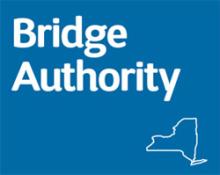NYSBA Building (Economic) Bridges with Dark Fiber
The New York State Bridge Authority (NYSBA) expects to bring in over $900,000 over the course of the next ten years in revenue from dark fiber leases. The agreements, which allow private companies to access publicly owned dark fiber spanning the bridges, will also help maintain low tolls and allow regional telecom operators to expand their data transmission networks. The NYSBA announced on August 4 that it would be leasing dark fiber on two new bridges - the Bear Mountain and Rip Van Winkle bridges in upstate New York. These will be the third and fourth NYSBA bridges that generate revenue from fiber leasing.
The NYSBA dark fiber leasing program is now in its fifth year. Since the Authority does not receive any state or federal tax money for the operation and maintenance of its bridges, it has sought creative solutions to finance the upkeep of its infrastructure. It has now leased dark fiber on four of five intended bridges, with plans to lease more on a fifth - the Kingston-Rhinecliff Bridge - in the near future.
In March, the Authority leased the Newburgh-Beacon Bridge to QCSTelecom, Inc. for $535,000. While such dark fiber leases are one-time fees, and usually last for at least ten years, the immediate benefit to the community takes the form of lower tolls for everyone who crosses the bridge. One editorial, posted in the Daily Mail, considered the locally-scaled benefits of the project:
Locally, we don’t have much to worry about from another toll hike in the immediate future. Although the lease won’t replace tolls as a principal source of revenue, it will help the bottom line and help keep tolls at current level. It’s clear that getting to the other side of the Hudson River can be costly over time and, as energy and transportation costs rise, we are not prepared for another toll hike. But with the success of the dark fiber leasing program, now in its fifth year, we can believe with some certainty that the drive to Columbia County won’t cost more.



